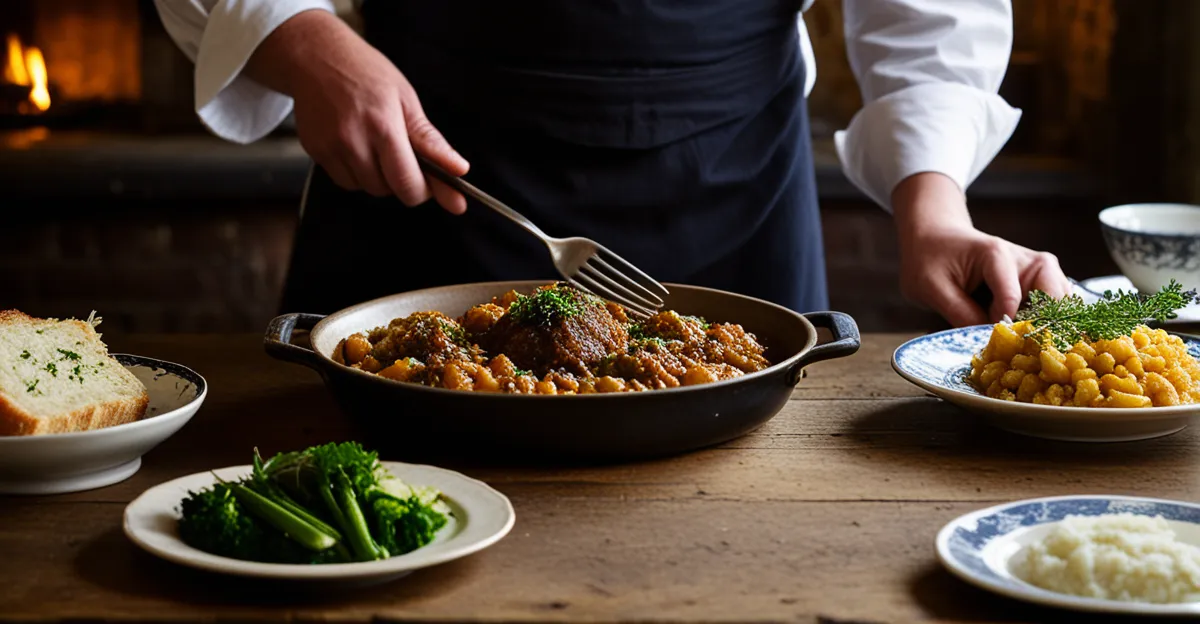Analyzing the Rich History of British Cuisine: How Did Traditional Dishes Evolve Over Time?

Tracing the Origins of British Cuisine
British culinary history is deeply rooted in the island’s ancient past, shaped by a confluence of cultures long before modern Britain emerged. The early British dishes reflect influences from the Celts, Romans, and Anglo-Saxons, each introducing distinct ingredients and cooking methods that laid the foundation for what we recognize today.
The Celts, among the earliest settlers, focused on farming and foraging, utilizing native plants and meats available from their natural environment. Their food origins centered around simple preparations using wild berries, grains, and game. When the Romans arrived, they significantly expanded the culinary repertoire by bringing imported ingredients such as grains like wheat and barley, herbs including dill and coriander, and new preservation methods like salting and smoking. These innovations introduced layers of flavor and sophistication previously unknown to the British diet.
Topic to read : How can you create a perfect fish and chips experience at home?
Anglo-Saxon settlers continued this evolution, refining the use of native ingredients alongside contributions like honey for sweetening and root vegetables for nutrition. Their food preparation leaned heavily on boiling and roasting, with particular attention to seasonal availability. Preservation played a critical role, especially in the absence of refrigeration, where techniques such as drying, salting, and smoking were essential for maintaining food supplies throughout the year.
Together, these early influences form the complex tapestry of British culinary history. They underpin the transformation of simple ingredients into classic dishes and demonstrate how ancient preservation and preparation techniques served not only practical needs but also established enduring flavors and traditions. Understanding these origins helps explain the resilience and diversity found in British cooking today.
Additional reading : How can you recreate a traditional Lancashire hotpot at home?
Major Historical Influences on Traditional Dishes
The Roman impact on food significantly shaped British culinary influences by introducing essential staples such as wheat and barley grains that became foundational in early British diets. Their mastery of herbs, like dill and coriander, enriched flavor profiles far beyond native herbs. Moreover, Romans introduced sophisticated dining customs, including communal feasts and three-course meals, which influenced later British culinary traditions.
Moving forward to the Norman period, Norman cuisine brought distinct innovations characterized by the use of exotic spices and sweets. This era marked the rise of elaborate banquets, where dishes were designed not only for nourishment but also for grandeur and display. The Normans further expanded the British culinary landscape by integrating techniques from continental Europe, enabling more complex food preparation methods.
The Victorian era witnessed a profound shift in food trends driven by industrialisation and social changes. Victorian food culture emphasized structured dining etiquette and the rise of middle-class home cooking. Innovations in food production and transport allowed greater availability of ingredients, influencing both everyday and celebratory meals. This era’s culinary influences cemented many traditional British dishes still recognized today.
Together, these historical influences—Roman, Norman, and Victorian—intertwined to create a rich, evolving tapestry affecting traditional British dishes and their lasting appeal. Understanding these culinary influences offers insight into how British cuisine became both diverse and regionally distinct.
Notable British Dishes and Their Evolution
British culinary history reveals a fascinating journey through time, especially when examining how iconic British dishes have transformed. For example, pies—once simple meat and vegetable-filled pastries—have evolved in both ingredients and presentation. Their recipe history shows variations across regions, adapting to local tastes and available produce, which reflects broader patterns in the food transformation process within Britain.
Puddings, another staple, also illustrate this evolution. Originally basic, boiled mixtures of grains and sweeteners, puddings like the famed Yorkshire pudding became integral to traditional meals. Their rising popularity coincided with changes in cooking technology and ingredients, marking a move from humble beginnings to symbolic dishes representing regional identity.
Roast meats provide further insight into these changes. Recipes gradually shifted from straightforward roasts to more elaborate accompaniments, influenced by both seasonal availability and cultural exchange. This evolution highlights how British food origins intertwine with broader societal developments.
Regional variations continue to play a crucial role. The Cornish pasty, for example, originated as a practical, portable meal for miners but has since become a celebrated dish with protected status. Similarly, the Yorkshire pudding, initially a way to stretch meat dishes economically, has become a beloved national specialty, showcasing how tradition and innovation coexist.
Fish and chips serve as a powerful case study in British culinary history. Emerging in the 19th century, this dish combined influences from immigrant Jewish fish frying techniques and traditional British food customs. Its recipe history reflects industrialisation and urbanisation trends, revealing food transformation driven by social factors.
Tea rituals and the full English breakfast (commonly called the fry-up) further demonstrate how British culinary traditions adapted over time. The prominence of tea speaks to trade routes and cultural exchange, while the fry-up’s evolving composition showcases how simple, hearty foods met changing lifestyles and nutritional knowledge.
Understanding the complex evolution of these iconic British dishes offers invaluable insight into the broader themes of culinary preservation and adaptation, emphasizing the continuous conversation between past and present food origins.
